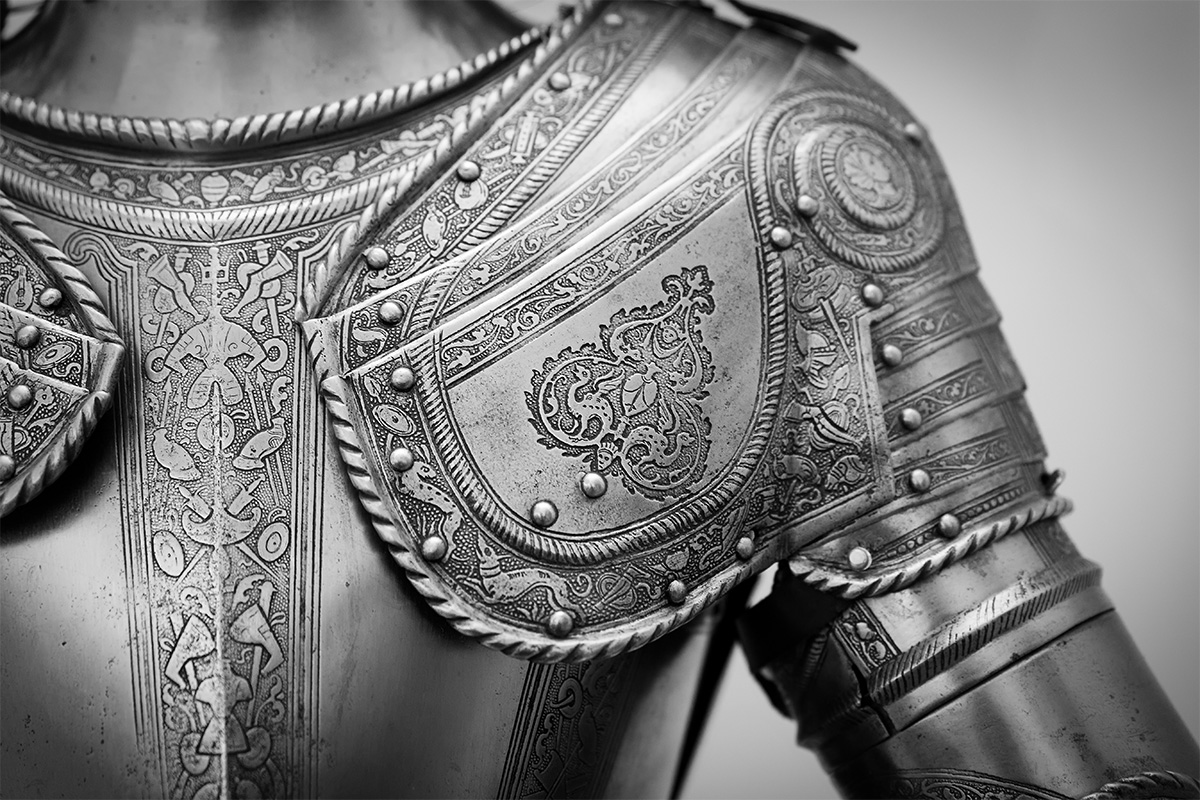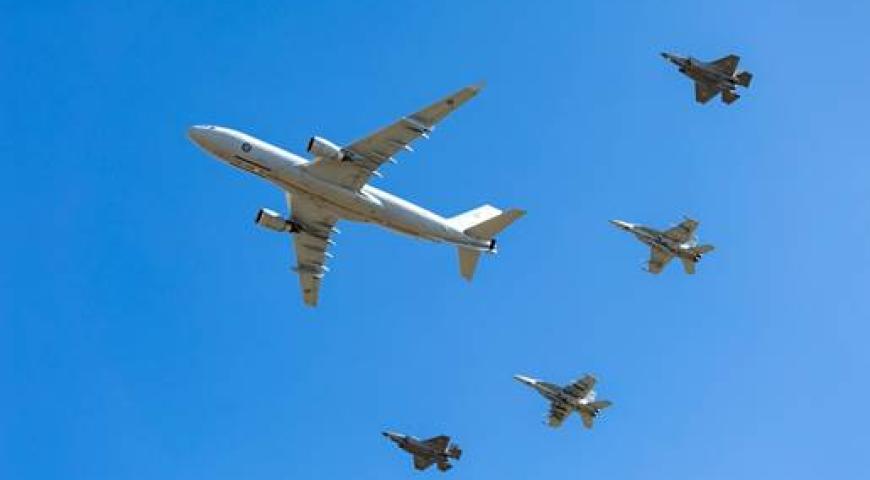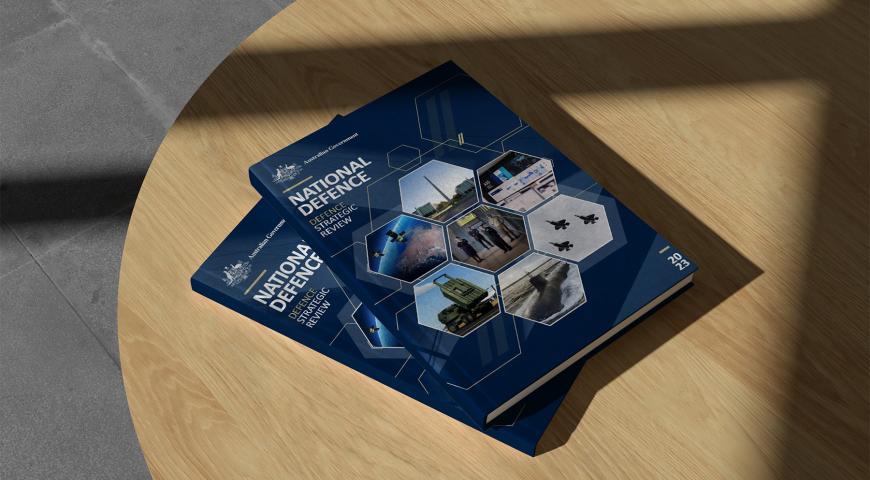‘Gentlemen: I hear many say, ‘What need so much ado and great charge in caliver, musket, pike and corslet? Our ancestors won many a battle with bows, black bills, and jacks.’ But what think you of that?
Captain: Sir, then was then, and now is now. The wars are much altered since the fiery weapons first came up’
Robert Barnet, The Theory and Practice of Modern Wars, 1598 [1]
Changes in the ways and means of warfare in Western Europe during the 16th and 17th centuries have been referred to as the ‘Military Revolution’. This term was originally from the paper delivered by Michael Roberts in 1955. It describes 1560-1660 as a period of significant transformation in warfare that contributed to the elevation of Western Europe as a centre of world power.[2] Other historians added or modified his thesis, such as Geoffrey Parker. He expanded the original period of time to over two centuries and incorporated further lessons from the Spanish, Hapsburgs and French, emphasised the role of defensive technologies and expanded on the development of naval combat.[3] Others such as Jeremy Black, have questioned the value of this period in the development of warfare, the causes of this change and if the period should be referred to as truly ‘revolutionary’.[4]
Warfare in Western Europe during the 16th and 17th century featured significant military, political-strategic, and societal factors that influenced the change in the conduct of warfare. While these were significant and important changes in the character of warfare, it did not change the nature of warfare, making the term ‘revolution’ not technically accurate despite its common use in military history.
Clausewitz provides a well known and useful means to discuss the interdependence of causal factors in the changing character of war. In particular, Clausewitz’s ‘trinity’ can be used to examine the tactical adaptation and professionalisation of the military, the size of armies and the role of the state and developments in naval combat. The pace of change and breadth of these changes can also be examined to to determine if they were revolutionary or evolutionary in nature.
Clausewitz and the Changing Character of War
Clausewitz describes the nature of war in book one of On War. In essence, it is a duel between forces, which involves violence (fighting) in the pursuit of policy. It is very human in nature with emotions of hatred, danger, courage, uncertainty and fear.[5] He also recognises that the character of war changes over time, it is a ‘true chameleon’, which adapts to the given case.[6] While the forms (Formen) of war are new, its essence (Wesen) remains the same.[7]
Clausewitz saw war as a combination of passions, ‘primordial violence, hatred and enmity’; an element of chance and uncertainty demanding creative adaptation, and the subordination of the act to reason provided by political policy.[8] Clausewitz proposes a trinity of the commander and his army (the military) representing the creative aspect and dealing with chance; the rational government of policy and strategy; and the passions of the people. The change in one aspect (military adoption, policy and strategy or social reform) will inevitably affect the others. The 16th and 17th centuries were periods of almost continuous warfare in Europe and this may have had greater influence than the other two elements, but it may be that a change in warfare is the consequence of societal or political-strategic influence. Some of the characteristics of warfare in this period will be examined through this complex interplay of military creativity (organisation, adapted technology and tactics), government (strategy, policy, economy and geography) and people (social changes, demographics and attitudes to military affairs).
Military Technology, Organisational Adaptation and the Military Profession
Technological advances during this time (as for many ‘revolutions’ in warfare) tend to be characterised as the driver for change. Geoffrey Parker places great weight in the role of technology (gunpowder advances and trace italienne) as does Clifford Rogers.[9] Although, as Black suggests, technological determinism is limiting and often ignores other elements in order to make an argument.[10] For example, the employment of handheld gunpowder weapons and the benefits of improved artillery were developed and fielded in Europe from the 1350s and were found in other parts of the world to various effect. The Ottomans, a constant threat to Europe at the time, had significant artillery and gunpowder weapons at their disposal, as did much of Asia.[11] [12] Technological advances are not without complications of their own. Advanced weapons such as muskets, arquebuses and artillery were costly, and placed significant pressure on logistics, demanding a ‘longer tail’ to manoeuvre and maintain them. Technology in of itself, is not a driver for military change, it is how that technology is adapted by the military in tactics, organisation and systems that determines the value of its military effectiveness.[13]
Roberts’s original work focussed the revolutionary nature on the abilities of Maurice of Nassau and then Gustavus Adolphus to adapt army organisation, systems and tactics to the new weapons technology and the increased size of forces.[14] They managed to harness the mass effect of musket/arquebus fire by adopting linear formations that allowed successive lines to reload and were accompanied by pike to protect against cavalry and support close combat.[15] Gustavus developed the technique for the offensive by adopting the counter-march technique of lines advancing through the others to fire.[16] Accompanying these tactics were new, smaller formations. During the Eighty Years War, Maurice organised battalions of 580 soldiers into ten ranks, Gustavus would reduce this further for his campaigns in the Thirty Year War.[17] These smaller organisations increased tactical manoeuvre and allowed better control for more complex drills. These were far smaller than the mass of the Swiss columns or Spanish tercio. Cavalry, although diminished in its employment, was also reformed and equipped with pistol and sword as a means for shock action. This made far better use of their speed and firepower than the caracole which has them trot to engage with pistol and then retire.[18] Under Gustavus, lighter artillery became integrated within the infantry and a coordinated combined arms effect was generated. The success of these adaptations was demonstrated at Breitenfeld in 1631 and the campaign into Germany.
These changes had potentially greater impacts on the state and the professionalisation of the military. More complex tactics, discipline and coordination demanded training establishments and non-commissioned officers and subalterns to attend them and command the smaller formations in battle. Nobility could not rely on birth to prepare them for modern warfare and required training themselves. Military schools started to appear such as the Military Training Academy in Sedan established by duc de Boullon in 1606 and the Kriegs und Ritterschule was established by Johan of Nassau at Siegen in 1617. [19] A permanent force led to a greater professionalisation of the military: year-round training, practice and deployment occupied forces. The new tactics subordinated the role of the individual and inculcated a new identity within the national military. The need for things such as permanent barracks, rules and discipline combined with regular pay and a career model for non-commissioned officers and officers, such as described in the English New Model Army in 1645, sowed the seeds for the modern professional military.[20] The state arguably benefitted from this subordination of the individual and increased association of the military to the Crown as it supported the growing political trend of Absolutism in Europe. Changes in the large armies may be reflected in broader society.
In Western European society there had been an increasing movement from the lower classes away from serfdom toward maintaining the rights and opportunities granted during the Black Death.[21] The lesser-nobility was subordinated far more to the Crown and did not monopolise military service. The chance of financial gain from service in mercenary group or later in the standing armies and the prospect of a career path was a great opportunity for the lower classes. The cavalry and artillery became more accessible and the need for more forces over long times suited the desire of many European lower classes to serve.[22]
The Swedes and to a lesser degree the Spanish, generated conscription-based armies and reduced their reliance on mercenaries. This was not welcomed by many of the European powers who were worried of arming the lower classes. Parrott highlighted that most states would employ mercenary groups and private regiments at least at the beginning of the Thirty Year War.[23] However, these mercenaries were more often directly employed by the Crown and not through a middle-person, while still expensive, this created greater reliance and control.
Gustavus conscripted from the landed peasantry, gave regular pay or the promise of land at the completion of service. The emerging soldier was well trained, well equipped and, more importantly had a common tie to fellow soldiers and the nation they fought for.[24] This moral component of fighting power provided the Swedes with a significant edge over mercenary armies and clearly demonstrated this with the campaign into Germany in 1630. These better equipped, trained and permanent forces were also some of the largest armies fielded in history.
The Rise of Large, Standing Armies and the State
The establishment of large standing armies and an increased monopoly on violence by the state (embodied as the Crown) was a key characteristic of warfare during this time. The growth in Armies was dramatic. For example, at the beginning of the Thirty Years War the imperial forces numbered 20 000 and the Protestant enemy at 12 000. By the end the Catholic forces under command were approximately 150 000 and the Swedish army was even larger.[25] The factors that account for this change includes tactical changes in fortifications, changing strategic ambitions, the bureaucracy and economics of war.
Parker attributes much of the growth to the adoption of the trace italienne, the complex fortress towns that were a response to the improvements in artillery and infantry tactics.[26] These fortifications towns were too large to bypass without a threat to flanks and rear, instead they required large forces to besiege them and other forces to observe and cut off reinforcements. Similarly, the fortress needed large garrisons and guns to man the defences. Those Western European nations that did adopt the trace italienne found much of their force was locked in various garrison duties rather than manoeuvre.[27] This is not the only cause of the growth of armies. Many nations, small and large could not, or did not, embark on expanded fortress towns due to construction and garrison costs.
Tactically the tercios and Swiss columns presented a strong defensive capability, large forces were required to counter these formations through double envelopment or flanking attack.[28] So tactics and technology influenced the growth of armies, but it was not the sole factor. Another was in the growing strategic ambitions of government and rulers.
The Western European major powers entered the period trying to consolidate or expand their sovereign territory by absorbing or removing independent dutches and indigenous aristocracy.[29] As a result, the number of nations in Western Europe was diminishing, but they were populous and had borders with competing powers that required protection. Previously they were dealing with internal security issues or smaller duchies, they now expanded the strategic horizon beyond their borders into Europe at large and the New World. This kind of strategic manoeuvre demanded larger forces and an all year preparedness to deal with the threat. Western European powers were therefore required to raise large, standing forces to meet the other power, therefore mass, and not quality of troops became a valued factor in military success.[30] The removal of the feudal contracts enabled the Crown to continue conflict without reference to others and this set conditions for the protracted wars that had to be sustained.[31]
Of greater long-term significance was the effect of these large, expensive forces. Although infantry was much cheaper than other forms of troops, the numbers were enormous and artillery and cavalry along with the supporting logistics were expensive total to build and maintain. The State (Crown) was the only entity that could be expected to fund warfare in this period. It demanded the State bureaucratise the military administration and link it inextricably to the economy of a Europe constantly at war.[32] The military was now part of state bureaucracy, first in Spain, then Sweden and France and would spread to other major powers throughout the period.[33] The expansion of the taxation systems to fund wars, rules governing contributions of both homeland and occupied territories. Economics began to dictate strategy.[34] Securing territories offset the pressures of supporting an Army within the homeland. The strain on inadequate logistics systems often dictated that manoeuvre was to be to where a force could sustain itself and not necessarily the political objective. Increased taxes and forced contributions also caused internal tensions and by the 17th century, the military was required to police their own nations, arguably another driver for larger forces under the Crown.[35] What was clear is that by the end of the 17th Century the Western European powers had a monopoly on violence and the economy, setting the conditions further for the rise of the Absolutism. This growing demand on the people was reflected in societal changes in parts of Western Europe.
In a societal sense, the proletarianization of the soldier with expanding opportunities for the lower classes to seek social advancement and wealth, particularly with later reforms in pay made conscription and military career more attractive.[36] The pool of potential soldiers had expanded not just through acquisition of territory, but the improved health and wealth of the Europeans.[37] The sense of violence and deep division from the reformation and counter-reformation, fuelled the passions of Europeans and sustained a willingness to support war, even with heavy handed taxation and acquisition policy. But changes in land warfare were not the only characteristic of the period.
Emerging Naval Capabilities
The period also saw a significant change on the conduct of war at sea. Major nations would change ship design to incorporate cannon. Specialised ships of war were built instead of arming or merchant galleys and maritime tactics for battle began to change. Instead of a short exchange of cannon followed by ramming and grappling to allow boarding, ships adopted a line-ahead formation, bringing to bear a broadside gun line to great effect. The line-ahead tactics was used for the first time in European waters in 1639, at the Battle of the Downs, where the Dutch won a major victory over Spain.[38]
The drivers for this change was the enhanced trade opportunities from the New World and shift in the strategic ambition of states. The advancement in ship building techniques allowed maritime nations to push further into the New World, and exploit this for trade and wealth. By the 16th century advanced ship building techniques allowed European strategic horizons to change. Where previously this was about focussed on control the Mediterranean it was now able to apply force across the oceans in order to reap the benefits in trade and wealth from the New World, India and the East Indies.
This increased competition for trade and the threat violence around the Channel, off the Spanish Main and Indian Ocean, whether from other European navies, the Barbary corsairs or the Ottomans galley fleets.[39] International trade conflicts erupted into war (including at sea) such as the numerous Anglo-Spanish Wars and the three Anglo Dutch wars of the 17th Century.[40] The secondary effect from economic and strategic opportunity drove the building of specialised warships and adoption of new tactics at sea.
Nations started to expand fleets form centralised Royal Navies due to the cost and the risk to national economy. This was the case with Henry VIII and Philip II. The Spanish under Philip II increased the size of their galley fleet to 146 ships by 1574; a three-fold increase in a dozen years.[41] This reflected the state monopoly on violence and the economy that was occurring on land.
This period of time was focussed on warfare: changes in the size of forces, employment of new means of fighting; the professionalisation of the military; and growing control of the state, but had the nature of war changed?
Revolutionary or Evolutionary Warfare
Do these changes in warfare constitute a ‘military revolution’? This was the term used by Roberts in his thesis and has been reformed and expanded by historians such as Parker.[42] The term, ‘revolution’ is commonly used to classify a number of periods that mark changes in the conduct of war.[43]
The word ‘revolution’ implies a relatively sudden and fundamental change in the nature of something. Within the concepts of political revolution, it refers to a sharp, violent and fundamental change in the nature of the political system that has immediate ramifications across all aspects of that society.[44] From a military perspective Krepinevich offers a definition,
‘the recognition, over some relatively brief period, that the character of conflict has changed dramatically, requiring equally dramatic - if not radical - changes in military doctrine and organizations’.[45]
The temporal aspect of the ‘military revolution’ started with a 100-year window defined by Roberts from 1560 to 1660. This has been expanded by other authors to cover at least two hundred or more years. This is not a ‘brief period’ and could be interpreted as more an ‘evolutionary’ step. In trying to define an acceptable time frame, Rogers suggests the temporal aspect of ‘revolution’ should be a single generation.[46]
The other test is if these events changed the fundamental nature of warfare. Some of the tactical adaptations in tactics by the Dutch and Swedes were based on Roman and Greek tactical formations. The concepts of standing Armies also echo the Roman practice.[47] The evolution of the trace italiaenne, whilst a departure from vertical defences, was the evolutionary response to improved artillery penetration and infantry skills. Other changes were new and impressive; the professionalisation of the military, the size of forces, control by the state and the growth of naval power.
Throughout the period the very nature of war that we took from Clausewitz had not changed, only its character.[48] This character was an important contribution to the development of modern warfare and should not be dismissed, but it should not be considered ‘revolutionary’.
Rogers provides an alternate approach which is both practical and applicable to a series of events in the development of warfare. He borrows the term ‘punctuated equilibrium’ from biology.[49] This term describes a steady evolution of a systems with periods of radical acceleration and development. This appears to be a better description of this period and those before and after it.
Conclusion
The 16th and 17th century was a period of significant change in the character of war. The drivers accounting for these changes were not all based in military reforms, despite Western Europe being engaged almost continuously in war. While tactical applications is interesting, it was the beginnings of some profound changes in the development of warfare; the professional military, the standing army, scale of warfare and subsequent emergence of the state (Crown) owning the monopoly on violence and the arrival of proper naval forces. Despite these changes, this was not a true ‘revolution’. It did not change the fundamental nature of war and unfolded over a prolonged period of over 200 years. This was, however, an accelerated change in the character of war, a spike on the punctuated equilibrium of warfare’s ongoing evolution.
Ágoston, Gabor. "Firearms and Military Adaptation: The Ottomans and the European Military Revolution, 1450-1800." Journal of World History 25, no. 1 (2014): 85-124. http://www.jstor.org/stable/43286061.
Black, Jeremy. War - Past Present & Future. Sutton Publishing. London. 2000.
Black, Jeremy. European Warfare in a Global Context 1660-1815. Routledge Taylor & Francis Group. 2006.
Childs, John. ‘The Military Revolution I, The Transition to Modern Warfare’. Chapter 2 in Townshend, Charles (ed). The Oxford Illustrated History of Modern War. Oxford University Press. New York. 1997.
Clausewitz, Carl von. On War. Michael Howard and Peter Paret (eds). Princeton University Press. New Jersey. 1989
Downing, Brian M. The Military Revolution and Political Change. Princeton University Press. New Jersey. 1992.
Duyvesteyn, Isabelle, and Jan Angstrom. Rethinking the Nature of War. Frank Cass, 2004.
Keegan, John and Andrew Wheatcroft. Who’s Who in Military History from 1453. Hong Kong. 1987.
Kennedy, Paul. The Rise and Fall of the Great Powers. Fontana Press, London. 1989.
Krepinevich, Andrew F. "Cavalry to Computer: The Pattern of Military Revolutions." The National Interest, no. 37 (1994): 30-42. http://www.jstor.org/stable/42896863.
Parker, Geoffrey. The Military Revolution, Military Innovation and the Rise of the West 1500-1800, Cambridge Press. 1996.
Parker, Geoffrey. ‘In Defense of the Military Revolution’, in Clifford J Rogers (ed). The Military Revolution Debate: Readings On The Military Transformation Of Early Modern Europe. Boulder, CO: Westview Press. 1995. Accessed October 23 2018. ProQuest Ebook Central.
Parrott, David A ‘Strategy and Tactics in the Thirty Years’ War: The ‘Military Revolution’ in Rogers, Clifford J (ed). The Military Revolution Debate: Readings On The Military Transformation Of Early Modern Europe. Boulder, CO. Westview Press. 1995. Accessed October 23 2018. ProQuest Ebook Central.
Roberts, Michael. Essays in Swedish History, Weidenfeld & Nicolson, London, 1967.
Roberts, Michael. "The Military Revolution, 1560-1660." In The Military Revolution Debate: Readings on the Military Transformation of Early Modern Europe, Taylor and Francis, 2018.
Rogers, C. J. The Military Revolutions of the Hundred Years' War. The Journal of Military History. 57(2). 1993. Retrieved from https://search-proquest-com.wwwproxy1.library.unsw.edu.au/docview/1296634056?accountid=12763
Tsouras, Peter G. Warriors Words: A Quotation Book. Cassell. London. 1992.
[1] Peter G Tsouras, Warriors Words. A Quotation Book, Cassell, London, 1992, p62
[2] Michael Roberts, lecture delivered before The Queen's University of Belfast on 21 January 1955
[3] Geoffrey Parker, The Military Revolution, Military innovation and the rise of the West 1500-1800, Cambridge Press, 1996
[4] Jeremy Black, European Warfare in a Global Context 1660-1815. Routledge Taylor & Francis Group, 2006, p 7
[5] Carl von Clausewitz, On War, Michael Howard and Peter Paret (eds), Princeton University press, New Jersey, 1989, pp 75-87
[6] bid, p 89.
[7] Jan Angstrom, Introduction, in Isabelle Duyvesteyn and Jan Angstrom (eds), Rethinking the Nature of War, Frank Cass, 2004, p 2.
[8] Ibid.
[9] Geoffrey Parker, The Military Revolution, Military Innovation and the Rise of the West 1500-1800, Cambridge Press, 1996, pp 6-24.
C. J. Rogers, The Military Revolutions of the Hundred Years' War. The Journal of Military History, 57(2), (1993). 241. Retrieved from https://search-proquest-com.wwwproxy1.library.unsw.edu.au/docview/1296634056?accountid=12763, p 244-45. Rogers highlights that he sees the preceding period the infantry and artillery revolutions from 1300-1500 as the key period technological advancement in gunpowder weapons.
[10] Jeremy Black, War - Past Present & Future, Sutton Publishing, London, 2000, p 94-95.
[11] Gabor Ágoston, "Firearms and Military Adaptation: The Ottomans and the European Military Revolution, 1450-1800.", Journal of World History 25, no. 1 (2014), http://www.jstor.org/stable/43286061, pp 93-98. Of note, despite the well-equipped Janissary and large artillery formations, the Turks did not adopt tactics that supported use very well and were divided by cultural groupings that prevented true modernisation.
[12] Black, War - Past Present & Future, Sutton, pp 96-99.
[13] Andrew F. Krepinevich, "Cavalry to Computer: The Pattern of Military Revolutions." The National Interest, no. 37 (1994): 30-42. http://www.jstor.org/stable/42896863, p 36.
[14] Michael Roberts, Essays in Swedish History, Weidenfeld & Nicolson, London, 1967, pp 195-197
[15] The pike remained a relevant weapon for this period, but the first bayonets started to appear by the mid-17th century and would be the weapon to eventually replace the pike.
[16] Roberts, Michael. Essays in Swedish History, Weidenfeld & Nicolson, London, 1967, p 196
[17] John Childs, ‘The Military Revolution I, The Transition to Modern Warfare’, in Townshend, Charles (ed). The Oxford Illustrated History of Modern War, Oxford University Press, New York, 1997, p 24.
[18] Ibid.
[19] John Childs, ‘The Military Revolution I, The Transition to Modern Warfare’, Chap 2 in Townshend, Charles (ed). The Oxford Illustrated History of Modern War, Oxford University Press, New York, 1997, p 32-33.
[20] Ibid, p 32.
[21] Brian M. Downing, The Military Revolution and Political Change, Princeton University Press, New Jersey, 1992, p 65.
[22] Roberts, Essays in Swedish History, pp 209-211.
[23] David A Parrott, ‘Strategy and Tactics in the Thirty Years’ War: The ‘Military Revolution’ in Rogers, Clifford J (ed). The Military Revolution Debate: Readings On The Military Transformation Of Early Modern Europe. Boulder, CO: Westview Press, 1995. Accessed October 23, 2018. ProQuest Ebook Central, p 81.
[24] John Keegan and Andrew Wheatcroft, Who’s Who in Military History from 1453, Hong Kong, 1987, p 143.
[25] Downing, The Military Revolution and Political Change, p 68.
[26] Parker, The Military Revolution, Military innovation and the rise of the West 1500-1800, p 24.
[27] Geoffrey Parker, ‘In Defense of the Military Revolution’, in Clifford J Rogers (ed). The Military Revolution Debate: Readings On The Military Transformation Of Early Modern Europe. Boulder, CO: Westview Press, 1995. Accessed October 23, 2018. ProQuest Ebook Central, pp 1561-1562.
[28] Downing, The Military Revolution and Political Change, p 68.
[29] Ibid, p 65.
[30] Ibid, p 68.
[31] Ibid, p 69.
[32] Childs, The Military Revolution I, p 30.
[33] Ibid, pp 31-32.
[34] Ibid, p 21.
[35] Ibid, p 31.
[36] Ibid, p 21.
[37] Ibid.
[38] Black, European Warfare in a Global Context 1660-1815, p 7.
[39] Paul Kennedy, The Rise and Fall of the Great Powers, Fontana Press, London, 1989, p 57.
[40] Downing, The Military Revolution and Political Change, p 65.
[41] Kennedy, The Rise and Fall of the Great Powers, p 58.
[42] Roberts, Michael. "The Military Revolution, 1560-1660." In The Military Revolution Debate: Readings on the Military Transformation of Early Modern Europe, Taylor and Francis, 2018.
Parker, The Military Revolution, Military innovation and the rise of the West 1500-1800
[43] For example – ‘the infantry revolution’, ‘the artillery revolution’, ‘the revolution in military affairs’
[44] Examples are the French, Russian, Cuban and Chinese revolutions. While the pre-conditions for revolution brew for some time the act of revolution itself is short and fundamental changes across all aspects of society start to occur almost immediately.
[45] Andrew F Krepinevich, "Cavalry to Computer: The Pattern of Military Revolutions." The National Interest, no. 37 (1994): 30-42. http://www.jstor.org/stable/42896863, p 30.
[46] C. J. Rogers, ‘The military revolutions of the hundred years' war. The Journal of Military History, 57(2), (1993). 241. Retrieved from https://search-proquest-com.wwwproxy1.library.unsw.edu.au/docview/1296634056?accountid=12763, p 276.
[47] Downing, The Military Revolution and Political Change, pp 73-74.
[48] There is currently a debate within some professional military professionals and academics that the coming of autonomous systems, robotics and artificial intelligence is the first credible military revolution. In that these adapted systems may remove the human from within the nature of war, the passions of hatred, danger, fear and courage. Effectively nullifying a part of the trinity. Without these passions there is a credible chance that the theoretical unlimited of violence through war may be sought.
[49] Rogers, ‘The Military Revolutions of the Hundred Years' War’, p 277.
Defence Mastery
Technical Mastery
Social Mastery
Changes in warfare in the 16th and 17th centuries - a ‘military revolution’? © 2019 by . This work is licensed under CC BY-NC-ND![]()
![]()
![]()
![]()
Please let us know if you have discovered an issue with the content on this page.
Comments
Start the conversation by sharing your thoughts! Please login to comment. If you don't yet have an account registration is quick and easy.




